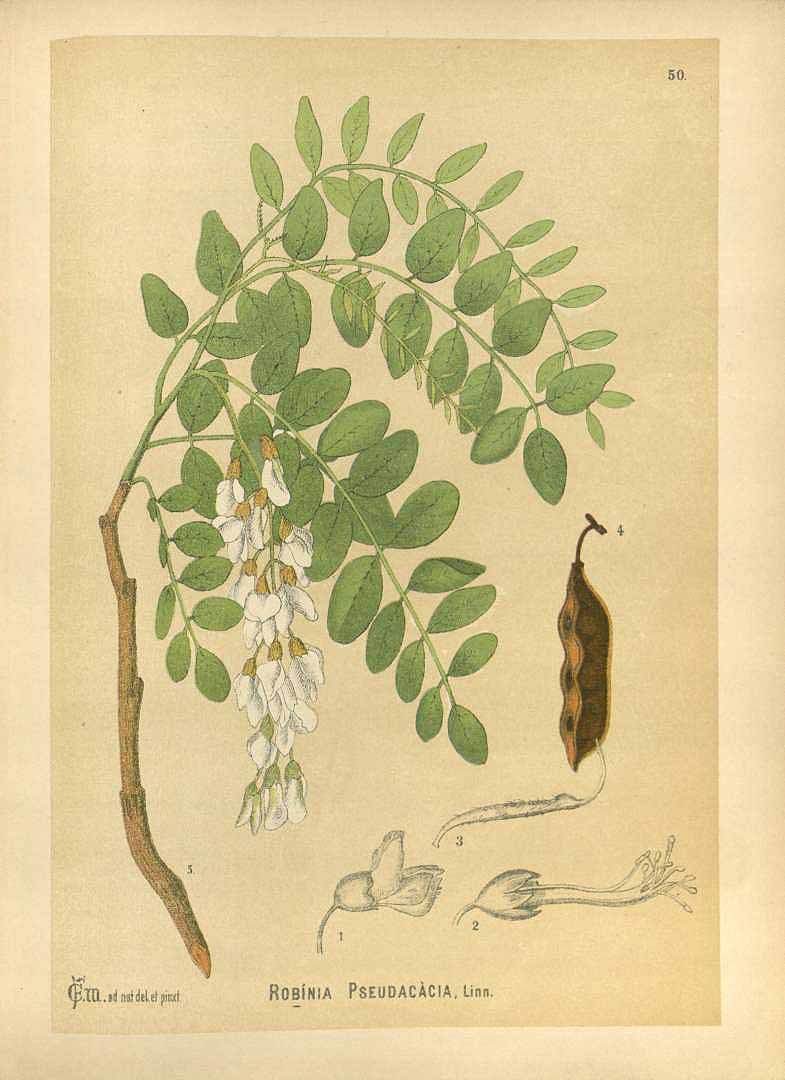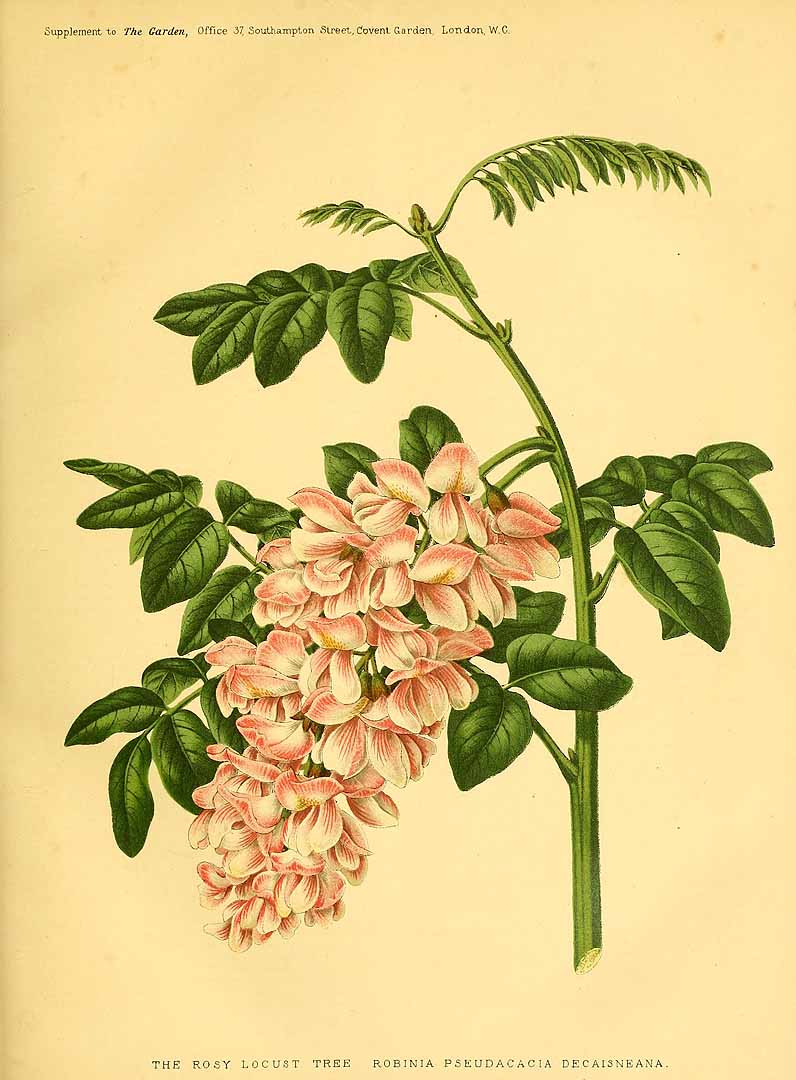! Nouveau site ici !
Vita > Plantae > Magnoliophyta > Magnoliopsida > Fabales >
Fabaceae > Robinia
Robinia pseudoacacia
(Robinier faux acacia)



 | *** - **
| *** - **
Vita > Plantae > Magnoliophyta > Magnoliopsida > Fabales >
Fabaceae > Robinia
Robinia pseudoacacia
(Robinier faux acacia)

Un arbre debout. Il atteint une hauteur de 22 à 25 m et une largeur de 12 à 15 m. Le tronc peut mesurer 60 cm de diamètre. Il perd ses feuilles au cours de l'année. Les branches sont légèrement arquées e... (traduction automatique)
→suite
⬀
Le  donne accès au menu
donne accès au menu (c'est votre point de repère) 😊 ;
En dessous vous avez la classification, à partir de la vie (Vita, premier rang) jusqu'à la classe au dessus de la plante, dont vous trouvez ensuite le nom scientifique/botanique (latin) puis le nom commun (français), le cas échéant ;
C'est aussi un lien vers la fiche complète (tout comme la ✖, en bas à droite, et le +, en dessous de la description) ;
Vient alors l'illustration (ou ce qui la remplace, en attendant), la comestibilité :
Et en bas
⬂





